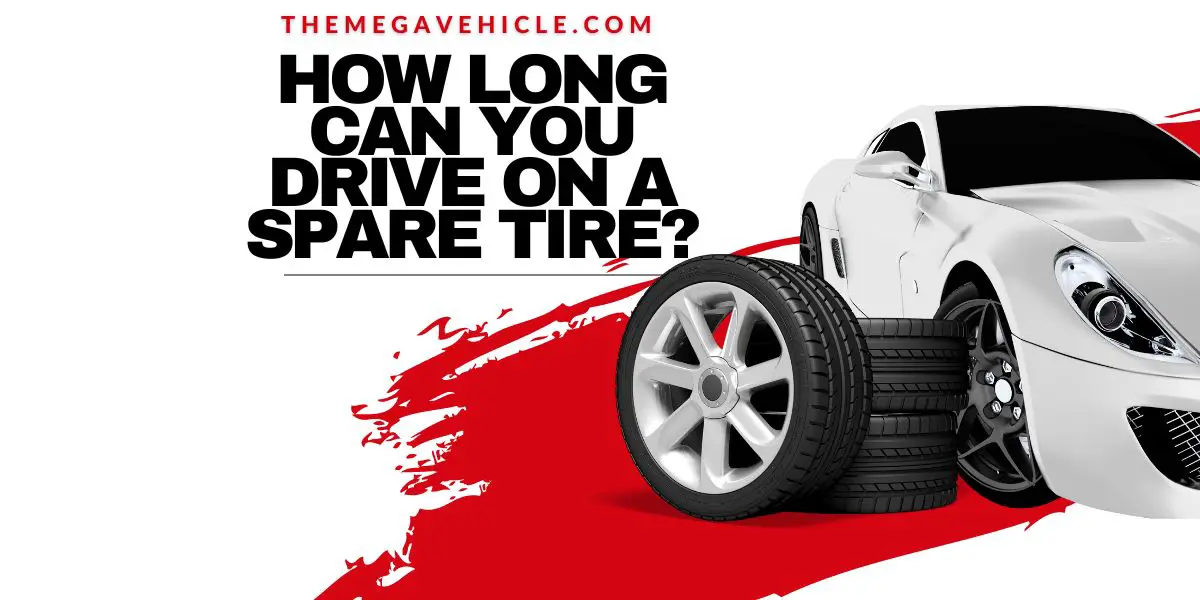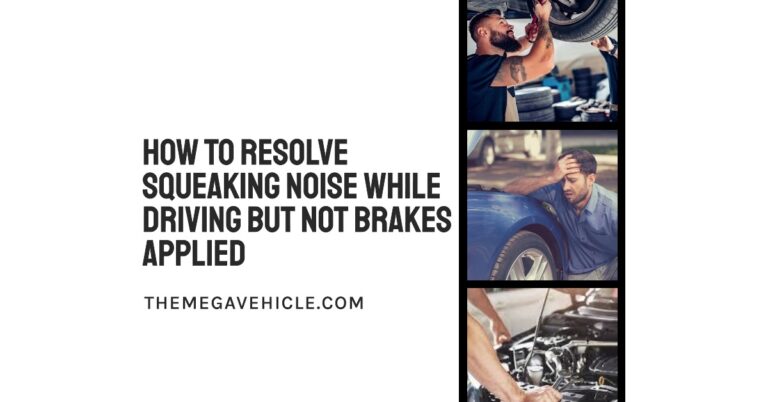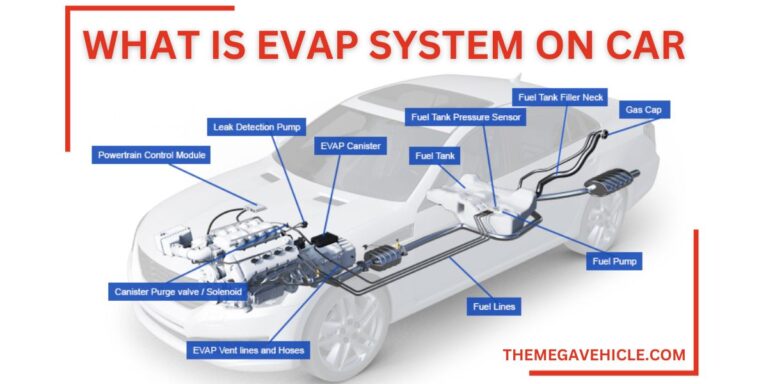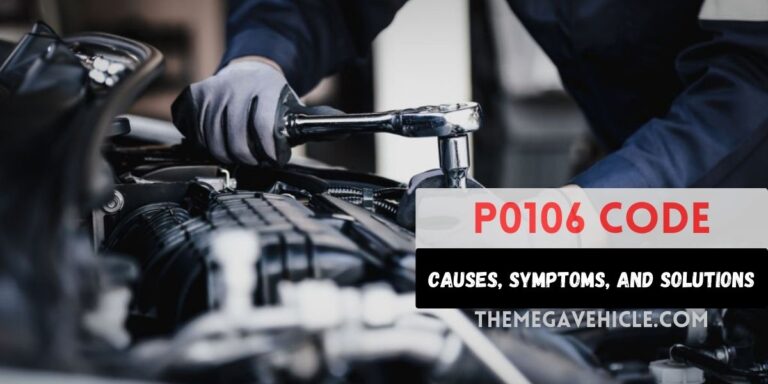How Long Can You Drive On a Spare Tire?

Have you ever experienced the sinking feeling of a flat tire on a road trip or during your daily commute? While it can be unsettling, knowing how to handle this situation calmly and safely can prevent further stress and potential danger. This guide dives deep into the world of spare tires, helping you understand their limits and empowering you to navigate the situation with confidence.
I. Why Pushing Limits Can Be Dangerous
The tempting question on everyone’s mind: “how long can I drive on a spare tire?” While pushing the boundaries might seem harmless in the short term, exceeding the recommended limits can lead to:
- Increased risk of blowouts: Spares are designed for temporary use, and prolonged driving stresses their weaker construction, making them more susceptible to punctures and complete failure.
- Reduced handling and stability: Spares often have different sizes and tread patterns compared to your regular tires, impacting your vehicle’s handling characteristics and stability, especially during sharp turns or sudden maneuvers.
- Potential damage to your car: Driving long distances on a spare can put undue strain on your car’s suspension, differential, and other components, leading to costly repairs.
Remember: Safety always comes first. Don’t let the pressure of reaching your destination override your judgment. Instead, prioritize getting your flat tire repaired or replaced as soon as possible.
II. The Big Question: How Long Can You Drive On a Spare Tire?
The burning question on everyone’s mind: how long can you actually drive on a spare tire? While the answer may seem straightforward, the reality is more nuanced. Dispelling common myths and understanding the key factors involved empower you to make informed decisions on the road.
1. The Official Limits
It’s crucial to start with the official guidelines. Your vehicle’s owner’s manual specifies the recommended mileage and speed limit for your specific spare tire. These limits are set by the manufacturer based on safety considerations and tire design. Exceeding them can lead to dangerous situations, including blowouts, compromised handling, and potential damage to your vehicle.
2. Considering Speed, Road Conditions, and Tire Health
While the official limits provide a starting point, several additional factors influence the safe driving distance on a spare:
- Speed: The faster you drive, the greater the stress on the spare, increasing the risk of failure. Aim for slow and steady driving, typically below 50 mph.
- Road conditions: Smooth, paved roads are ideal. Avoid rough terrain, potholes, and debris that can damage the spare further.
- Tire health: Ensure your spare is properly inflated and free of visible damage before using it. A worn or underinflated spare is even more prone to problems.
3. Emergency Situations and Calculated Risks
In extreme situations, exceeding the recommended limits might be necessary. For example, if you’re stranded far from help and nightfall approaches, reaching the nearest repair facility might be your only option. However, approach this with extreme caution and prioritize safety:
- Minimize distance and speed: Drive only as far as absolutely necessary and at the slowest possible speed.
- Frequent inspections: Pull over regularly to check the spare for signs of damage or overheating.
- Alert other drivers: Use hazard lights and maintain awareness of your surroundings.
Remember, this is a last resort. Never prioritize reaching your destination over your safety and the safety of others.
By understanding the official limits and considering the additional factors, you can make an informed decision about how long to drive on a spare tire. Remember, safety always comes first. In the next section, we’ll explore essential precautions and expert tips to ensure a smooth and stress-free journey, even with a flat tire!
Also Read: How Much Is A Tire Rotation? The Cost & Saving Secrets
III. Not All Spares Are Created Equal: Differences in Types and Capabilities
When it comes to spare tires, one size (or rather, shape) definitely does not fit all. Understanding the different types and their capabilities is crucial for making informed decisions when facing a flat tire.
1. Temporary vs. Full-Size Spares
The most fundamental distinction lies in their intended purpose.
- Temporary Spares (Donut Spares): These compact, lightweight tires offer a space-saving solution for modern vehicles. Think of them as “get-me-to-safety” options, designed for limited mileage at reduced speeds (usually around 50 mph and 50 miles). Their smaller size and thinner tread compromise handling and traction, making them unsuitable for long journeys or spirited driving.
- Full-Size Spares: These are essentially identical to your regular tires, offering the same handling, performance, and speed capabilities. While heavier and taking up more trunk space, they provide a true “peace of mind” solution, allowing you to continue your journey without significant limitations.
2. Donut Spares: Compact Convenience with Limitations
Donut spares, also known as space-saver spares, are the most common temporary option found in many modern vehicles. Their key advantages are:
- Compactness: They take up minimal space in the trunk, allowing manufacturers to prioritize other design features.
- Lightweight: They reduce overall vehicle weight, improving fuel efficiency.
- Easy installation: Their smaller size and lighter weight make them easier to handle during roadside changes.
However, these conveniences come with limitations:
- Limited speed: Donut spares are typically rated for speeds below 50 mph due to their thinner construction.
- Reduced mileage: Driving long distances on a donut can damage the tire and put undue strain on your vehicle’s components.
- Compromised handling: Their smaller size and shallower tread impact your car’s handling and stability, especially during cornering and emergency maneuvers.
3. Compact Spares: Striking a Balance Between Size and Performance:
Some vehicles come equipped with compact spares, offering a middle ground between donuts and full-size spares. These tires are larger and heavier than donuts, but still smaller and lighter than regular tires. This translates to:
- Slightly higher speed ratings: Compact spares might be rated for speeds up to 65 mph, offering some flexibility in emergency situations.
- Increased mileage potential: Compared to donuts, they can handle slightly longer distances before needing replacement.
- Improved handling: Their larger size and deeper tread provide better handling than donuts, especially at higher speeds.
However, compared to full-size spares, they still have limitations:
- Weight and space: They are heavier and bulkier than donuts, requiring more trunk space.
- Performance: They cannot match the full performance and handling capabilities of your regular tires.
Ultimately, the best spare tire for you depends on your vehicle, driving habits, and priorities. Consider factors like trunk space availability, how often you travel long distances, and the importance of maintaining full performance in case of a flat.
Remember, regardless of the type of spare you have, prioritize safety first. Always follow the manufacturer’s recommendations for speed and distance limitations, and never push the boundaries.
Also Read: How Long Does a Tire Plug Last and How to Extend It
IV. Essential Precautions for Every Journey on a Spare Tire
Facing a flat tire can be stressful, but by taking the right precautions, you can ensure a safe and hassle-free journey to get your tire fixed. Here are some essential steps to remember:
1. Pre-Drive Inspection: Ensuring Your Spare is Ready for Action
Don’t wait until you have a flat to inspect your spare tire. Make it a habit to check it regularly, just like your regular tires. Here’s what to look for:
- Proper inflation: Check the inflation pressure against the recommended PSI, usually found on the spare tire itself or in your owner’s manual. Underinflated or overinflated tires can be dangerous and impact handling.
- Visible damage: Inspect the tread for any cuts, bulges, or cracks. Even minor damage can compromise the tire’s integrity.
- Tread depth: While spares don’t wear out as quickly as regular tires, ensure it has enough tread depth to provide adequate grip on the road.
2. Adjusting Tire Pressure: The Right PSI for Optimal Performance
Proper inflation is crucial for safety and performance. While most gas stations only have gauges for passenger car tires, many offer air pumps suitable for smaller spares. Use the recommended PSI specified on the tire or in your owner’s manual. Remember, exceeding the recommended pressure can be as dangerous as underinflation.
3. Adapting Your Driving Style: Smooth Maneuvers and Reduced Speed
Remember, you’re driving on a temporary solution with different handling characteristics. Adapt your driving style accordingly:
- Slow and steady wins the race: Reduce your speed significantly, typically below 50 mph, to minimize stress on the spare and maintain control.
- Avoid aggressive maneuvers: Take corners gently and brake smoothly to avoid putting undue strain on the tire and your vehicle’s components.
- Increase following distance: Maintain extra space between you and the vehicle ahead to allow more time for braking and reaction.
4. Knowing Your Limits: When to Pull Over and Seek Help
It’s crucial to remember the limitations of a spare tire. Don’t push your luck:
- Heed the distance and speed warnings: Don’t exceed the recommended mileage or speed limits for your specific spare. Remember, exceeding limits significantly increases the risk of a blowout.
- Listen to your car: Pay attention to any unusual vibrations, noises, or handling changes that might indicate a problem with the spare.
- Pull over if unsure: When in doubt, err on the side of caution. Safely pull over and seek help at the nearest tire shop or repair facility.
By following these essential precautions, you can maximize your safety and minimize the stress of driving on a spare tire. Remember, prioritizing safety is always the best course of action. In the next section, we’ll go beyond the basics with expert tips and unconventional strategies to make dealing with a flat tire even smoother!
V. Pro Tips for Savvy Drivers: Extending the Life of Your Spare Tire and Avoiding Trouble
Facing a flat tire is never ideal, but for savvy drivers, it doesn’t have to be a major ordeal. By going beyond the basics and incorporating these expert tips, you can ensure your spare tire is ready when you need it most and minimize the stress of a roadside change.
1. DIY Maintenance: Simple Checks and Fixes to Keep Your Spare Rolling
Don’t wait for a flat to discover a neglected spare. Here are some simple DIY checks and fixes you can perform regularly:
- Visual inspection: Look for cracks, bulges, or uneven tread wear. A damaged spare is a safety hazard.
- Tread depth check: Use a tread depth gauge to ensure your spare has sufficient grip for safe driving.
- Pressure check: Regularly inflate your spare to the recommended PSI using a portable air compressor.
- Tighten lug nuts: Periodically check and tighten the lug nuts securing the spare to ensure they haven’t loosened over time.
2. Spare Tire Upgrades: Investing in Peace of Mind and Extended Range
For those who value extra peace of mind and extended range on a spare, consider these upgrades:
- Full-size spare: If your vehicle doesn’t come with one, consider investing in a full-size spare for maximum performance and safety.
- Compact spare upgrade: If space is a concern, explore upgrading your donut spare to a compact spare for better handling and slightly longer driving distances.
- Self-inflating spare: These innovative spares automatically inflate when needed, eliminating the hassle of using a pump.
3. Thinking Ahead: Packing Essentials for a Smooth Spare Tire Experience
Being prepared can make a world of difference when dealing with a flat:
- Emergency kit: Include a flashlight, jumper cables, a first-aid kit, and reflective triangles for enhanced visibility.
- Tire pressure gauge and portable air compressor: Ensure you can quickly inflate your spare to the correct pressure.
- Spare tire cover: Protect your spare from the elements and maintain its appearance.
- Phone charger: Stay connected and able to call for help if needed.
Bonus Tip: Consider downloading a roadside assistance app that can connect you with help quickly and easily in case of a flat tire.
By incorporating these expert tips and unconventional strategies, you can transform your spare tire from a last resort into a reliable backup plan, ensuring a smooth and stress-free journey even when faced with a flat. Remember, taking the time to prepare and maintain your spare can save you time, money, and potentially even your safety down the road.
VI. Drive with Confidence: Knowledge is Power on the Road
Facing a flat tire can be unnerving, but by equipping yourself with the right knowledge and taking necessary precautions, you can navigate the situation calmly and safely. Remember, knowledge is power on the road.
The key takeaway: Spare tires are temporary solutions, not replacements for your regular tires. While they can get you out of a jam and to the nearest repair shop, pushing their limits can be dangerous. By understanding the different types of spares, their limitations, and the crucial factors influencing safe driving distance, you can make informed decisions on the road.
Don’t let a flat tire derail your journey. Be prepared, stay informed, and prioritize safety above all else. By following the guidance outlined in this article, you can drive with confidence knowing that you have the knowledge and tools to handle even a flat tire like a pro.
Remember:
- Regularly check your spare tire’s pressure and condition.
- Respect the manufacturer’s recommendations for speed and distance limitations.
- Adapt your driving style for smooth maneuvers and slower speeds.
- Never hesitate to pull over and seek help if you’re unsure or experience any issues.
With the right knowledge and preparation, you can transform a potential inconvenience into a minor blip on your journey. Keep rolling, and drive safely!






